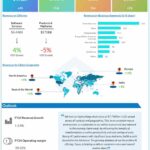Stay informed with free updates
Simply sign up to the Oil & Gas industry myFT Digest — delivered directly to your inbox.
European gas prices hit their highest point since March on Thursday as traders worried that global energy supplies would be hit by pipeline disruptions and the conflict between Israel and Hamas.
The price of futures contracts for Dutch gas, the European benchmark, rose as much as 14.2 per cent to €53 per megawatt hour, taking its gains to more than 30 per cent since Hamas’s attack on Israel last weekend.
The moves are the latest jolt for a market that has been volatile since Russia’s invasion of Ukraine last year. Prices have fallen from a peak of more than €300 per megawatt hour in August 2022 and Europe has largely filled its gas stocks in preparation for winter, cushioning it from further disruption.
But continued rises will push up prices for businesses and consumers once the continent’s winter stocks diminish. While oil markets have largely shrugged off the impact of the Israel-Hamas conflict, traders have grown worried about threats to supplies around the world.
In response to the attack, Israel cut production of its exports to Egypt while Finland said it suspected a damaged pipeline had been sabotaged while strikes by workers in Australia are unresolved.
“Gas prices have risen due to lower supply, but, arguably more importantly, risks to supply,” said Edward Gardner, a commodities economist at Capital Economics, in a note on Thursday. “Perhaps the bigger concern is that the Hamas-Israel conflict could morph into a regional conflict.”

On Monday, Israel’s energy ministry ordered US major Chevron to temporarily suspend operations at the Tamar gasfield, the closest of three Israeli offshore gas projects to Gaza, due to security concerns.
Tamar accounts for about half of Israel’s more than 20bn cubic metres of annual gas production, according to Capital Economics. While most of Israel’s gas is consumed domestically, about a third is exported by pipeline to Egypt and on to global markets. It is also an important provider of LNG gas to Europe.
“With Tamar offline, Israel will struggle to continue to export natural gas to Egypt by pipeline. This means that Egypt’s LNG exports to the global market are unlikely to recover by much after a seasonal lull,” Gardner added.
Production at Israel’s other major gasfield, the Leviathan field near Lebanon, could also come to a halt if the conflict in the Middle East expanded, he added.
At the same, in northern Europe traders are concerned that a leak identified on Sunday on a 77km-long Baltic Sea gas pipeline between Finland and Estonia may have been the result of sabotage.
“The geopolitics of the [Baltic] pipeline leak is more the driver of the price rises rather than the loss of gas supply to the market,” said Tom Marzec-Manser, head of gas analytics at ICIS, an energy market intelligence company.
Finnish president Sauli Niinistö has discussed the damage with Jens Stoltenberg, Nato secretary-general, and the country is working to uncover the reasons behind the leak, as well as a break in a data cable between Finland and Estonia.
The lack of clarity over the causes of the leak has created “a lot of nervousness” among traders, Marzec-Manser said.
Meanwhile, threats of strike action by Australian workers at liquefied natural gas facilities operated by US major Chevron are also adding to global supply concerns.
The dispute has underscored how European prices are increasingly affected by the global LNG market as it weans itself off cheap Russian gas. Workers are in a dispute with Chevron over pay conditions at the Gorgon and Wheatstone facilities, which account for roughly 7 per cent of global LNG supply.







